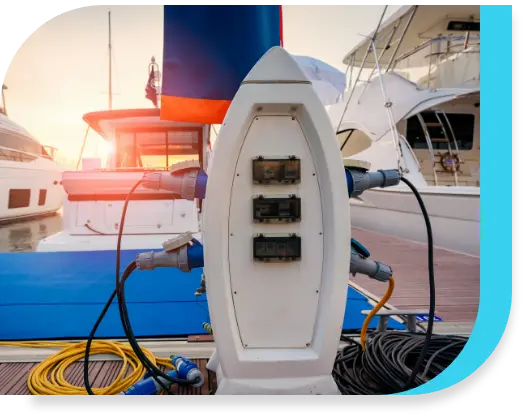Electrifying the future of marine vessels
A look at how far we have come in electrifying the shipping industry.
Efforts to electrify the maritime industry have accelerated in recent years, all in a bid to meet the emissions reduction targets set by the International Maritime Organization (IMO) - the United Nations regulatory body responsible for environmental concerns in shipping1. Today, an estimated 80% of ocean-going vessels in service have been partly electrified, with hybrid diesel-electric transmission systems. However, it is estimated that only 1% of the world’s shipping fleet is currently fully electrified1.
This is because achieving a fully-electric marine vessel has its own set of unique challenges, especially due to battery capacity or compatibility with biofuel.

Batteries for ships have a limited energy capacity, making it currently only suitable for short to medium-range routes. In Singapore, these include harbour crafts and ferries.
In 2023, the Maritime and Port Authority (MPA) made a directive that all new harbour craft registered from 2030 will need to be fully electric, be capable of using pure biodiesel, or be compatible with net-zero fuels such as hydrogen2, thereby hastening the adoption for cleaner-energy marine vessels.
As part of this electrification push, the MPA launched the first pilot trial for an electric harbour craft charging point at Marina South Pier to provide the maritime industry with decarbonisation options3.
Launched in April 2023, the charger was set up by national grid operator SP Group in partnership with local startup Pyxis, and uses the same technology in SP’s electric vehicle charging points, with technical improvements for maritime application. The aim is to roll out up to 10 more charging locations over the next three years4. The 150-kilowatt (kW) charger at Marina South Pier can charge an electric harbour craft with an approximate battery capacity of 500kWh in around three hours and enable an operating range of about 90 km3.
Around the same time, Singapore’s first fully electric vessel transporting crew members from mainland Singapore to ships in Singapore’s waters was also launched3.
In November 2023, Singapore’s first full-electric cargo vessel, called Hydromover, was launched5. The vessel was designed with swappable battery solutions and can carry up to 25 tonnes of cargo5. It generates zero emissions and can potentially reduce operational costs by up to 50% compared to conventional vessels, due to improved energy efficiency and lower maintenance costs5.
Cargo ships typically travel for longer-distances and carry more weight than harbour crafts. Hence, with a second version of the cargo ship currently in the works, the Hydromover is seen as a breakthrough for cargo transportation in the maritime industry5.
Meanwhile, in the larger scheme of the shipping industry, a multi-fuel transition will likely take place. Based on current industry pilots and feasibility studies, biofuels and LNG are the likely interim or transitional fuels in the near term6. While in the mid to long-term, hydrogen and its carriers (e.g. ammonia, e-methanol) as well as bio-LNG, may also become viable low or zero-carbon marine fuels6.
Plenty awaits the future of electrified ships, as battery technologies improve, along with economic benefits and operational capability. We will begin to see more and more clean energy options for the maritime industry, and not forgetting that ultimately, the environment and our future benefit from lower emissions.

Contact us to learn more about SP’s solutions for a more sustainable maritime industry.
Footnotes
1Electrification In The Maritime Industry, Challenges And Prospects, Business Times, August 2024
2New harbour craft have to run on electricity or be ready for greener fuels from 2030, March 2023
3Decarbonisation options for Singapore's maritime industry as electric harbour craft charging point trial starts, CNA, April 2024
4New approved designs for electric harbour craft to be released by the end of 2024, CNA, October 2024
6Maritime Singapore Decarbonisation Blueprint, mpa.gov.sg

